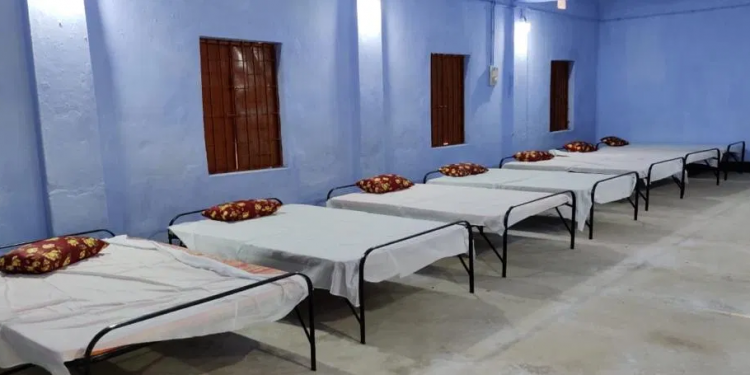Charudutta Panigrahi
The ground-breaking idea of Panchayats handling the registration and monitoring of the migrants, in Odisha, puts the management of the people in the hands of the community. Faced with a pandemic, this move is both audacious and progressive. While the Panchayat is going to be the repository of the data of the last mile, it makes sense for them to plan and implement youth development programmes.
After the migrants’ home coming, the next immediate challenge would be of their livelihood. Panchayats do not have the capacity to prepare livelihood blueprints and would require help. Civil society organisations of Odisha are mostly welfare programme managers and that too for short term. Handling more than half a million migrants needs larger numbers of localised micro plans.
Odisha should be the first state to demonstrate that the Gram Swaraj model of Gandhiji works, because the state has a strong Panchayati Raj system. Rural Odisha is well set for launch of development programmes. The 6,798 Gram Panchayats and the identified 7,276 temporary medical camps therein should continue to be the outreach centres and eventually made permanent centres. These centres could operate as multilevel service centres. Youths’ joblessness will create destabilising social and economic problems, and this needs be addressed.
The State Planning Board may make micro plans for the Panchayats. It can draft the plans with help from local organisations/agencies. Think tanks can assist the government in making plans that are acceptable for banks as also government agencies. Nabard would need viable proposals to support agriculture activities.
This year’s Rabi harvest has gone waste and could not reach the market while the Kharif preparation looks uncertain. Outward migration would reduce if initiatives are taken to make agriculture and allied sectors more viable and sustainable for farmers. The state has a cultivated area of 61.80 lakh hectares with more than 91 per cent of these belonging to the small and marginal category, and the average size of land-holding being 1.04 hectares. So, a careful plan, with adequate financing, involving technology and smart marketing, is required to increase productivity and farmer income.
Per capita availability of land, water and other natural resources is diminishing along with the various biotic (insects and diseases) and abiotic stresses (flood, drought, cyclone), increasing poverty and migration. This is the time to gear up, make micro plans, influence banks, and proliferate agri-entrepreneurship. It is not just of farming but also of selling and making profits. Jajpur district is expecting more than 50,000 migrants to come back to the district. It has about 1,30,000hectares of paddy land for the forthcoming Kharif season and is also known for its high-quality groundnut and horticulture.
The rehabilitation of the migrants is of immediate concern and agriculture is the sector to look up to. Resumption of manufacturing units would take time and, in the meantime, agriculture could offer employment. Similarly, in Ganjam.
In other places of Odisha with access to IT/IT-enabled services and reasonable internet connectivity, the youth may be oriented to online learnings in AI and machine learning. After Covid, cybercrime and impingement would be a growing area of work. The days of human intermediaries are numbered, even if it exists in some sectors. Covid 19 made the grounds more fertile for AI and ML to grow faster.
As the coronavirus outbreak continues to proliferate and gets entrenched, researchers are looking at artificial intelligence as a way of addressing the challenges posed by the virus. Our original intelligence falls short. Many research projects are using AI to identify drugs that were developed to fight other diseases, but which could possibly be now repurposed to fight Covid. AI helps in studying the molecular setup of the existing drugs and identifies the ones which could disrupt Covid-19’s attack. Lots of job opportunities in such fields can arise.
IT and pharma are also promising fields in the post-Covid days. This can be done by setting up rural BPMs. The Impact Sourcing model not only reduces adult digital illiteracy rates but also creates thriving rural communities. Odisha needs to step up agriculture, engage its youth and retain power with the Panchayats to minimise Covid’s menace on its economy. Micro planning is the first step.






































